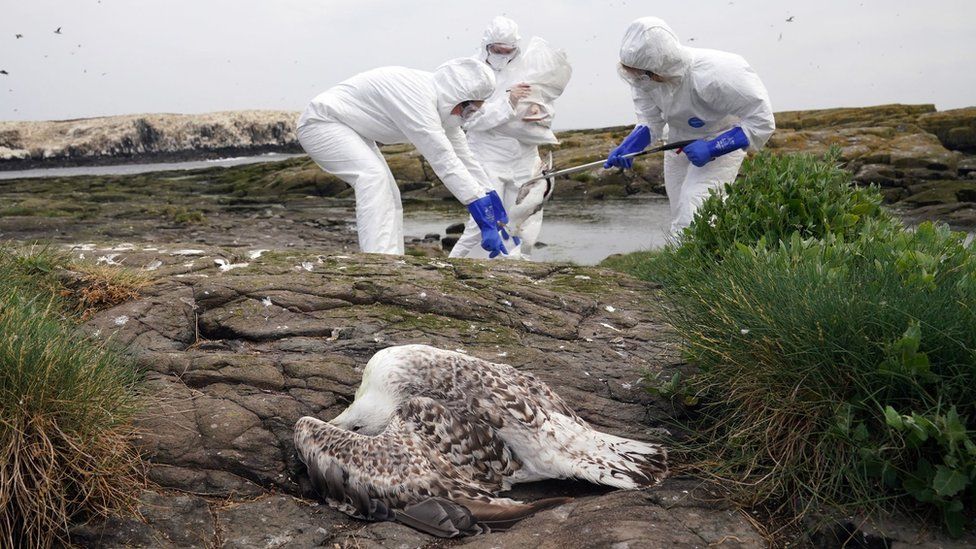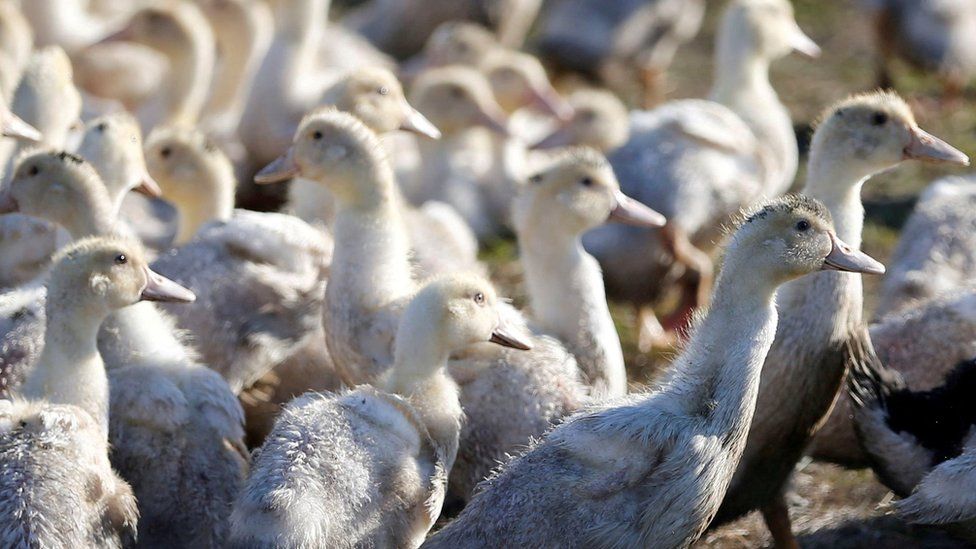Scientists have found an important defense that stops nearly all bird flu when it tries to enter our bodies.
Since 1918, four pandemics involving bird flu have killed millions of people.
The research, which was directed by the University of Glasgow, revealed that both the pandemics and common winter flus had evolved methods of overcoming this "powerful barrier.".
The research team believes that we will soon be able to identify which of the flus currently affecting birds poses the greatest risk.
The scientists were looking into spillover situations. These are the times when a person becomes infected by an animal. A new pandemic begins with this species-to-species transition, which is a crucial stage. .
In lab tests, scientists discovered a region of our DNA, or genetic code, that activates in response to an infection. The name of it is BTN3A3 (although even the researchers acknowledge "we're stuck" with a awkward name).
According to the research, which was published in the journal Nature, BTN3A3 became active in our noses, throats, and lungs and inhibited the spread of bird flu. .
According to researcher Dr. Rute Maria Pinto, "almost all" strains of bird flu are unable to get around this defense, so "these are typically blocked by it, so they don't jump.".
"The vast majority of human viruses and, in fact, all pandemic viruses to date, have [resistance to BTN3A3], so they get past this barrier and infect," she continued. ".
The possibility of human-to-bird flu transmission exists constantly. Poultry poses a high risk due to the sheer volume of farmed animals and their close proximity to people, and there are many different flu viruses in wild birds.
50 million people are thought to have died as a result of the 1918 flu pandemic, which is thought to have originated in birds. Before the first human cases appeared in 2013, the researchers found that the H7N9 strain of bird flu had higher levels of BTN3A3 resistance in 2011 and 2012.
One of the strategies a bird flu could develop to successfully infect us is to find a way around BTN3A3.
The goal of the study is to routinely analyze—or sequence—the genetic material of bird flus currently in circulation in order to spot the most harmful strains and combat them.

We'll be able to put all the puzzle pieces together in the not too distant future, according to Prof. Massimo Palmarini, director of the Centre for Virus Research in Glasgow.
"Based on a virus's sequence, we can estimate that this virus has a 90% chance of infecting humans and that this virus has a 10% chance. ".
The introduction of targeted measures could then aid in controlling viruses that do have a high risk of crossing the border.
The largest bird flu outbreak (also known as avian flu) ever seen has affected bird populations around the world.
Although the H5N1 virus has occasionally jumped into humans after direct contact with infected animals, it has not spread from one person to another. .
Prof. Palmarini stated that "all seven" cases of the virus found in humans this year, as well as "a little bit more than 50%" of the virus samples from birds, were resistant to BTN3A3.
He told me, "That is one layer of concern, and the other is the virus has spread like never before.
The virus's capacity to avoid BTN3A3 is just one aspect of its danger to human health.
"This interesting study illustrates an important piece of the very complex puzzle underpinning viral transmission between species," said Dr. Stephen Oakeshott, director of infections and immunity at the Medical Research Council.
"This kind of mechanistic scientific understanding, when combined with genetic monitoring, can provide a window into potential disease risks to help with public health planning. ".
James, please. via Twitter.







